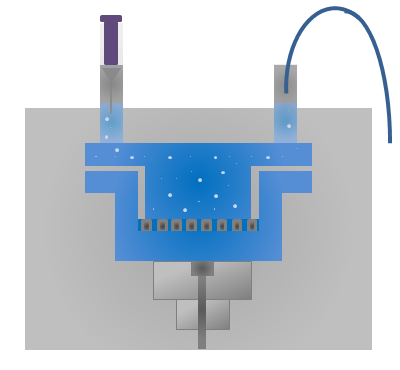Membrane osmometry

Determination of number averaged molar masses
Membrane osmometry is a technique for the determination of molecular masses of polymers by means of osmosis. The phenomenon of osmosis describes the attempt of solvent molecules to go through a semipermeable membrane into a solution. The detection of the so originated osmotic pressure can be determined into the number average molecular weight Mn of the solved polymer.
The membrane osmometer consists of two chambers, whereupon one containes pure solvent and the other the polymer solution. The chambers are separated with a semipermeable membrane. Beside the polymer concentration of the solution the detected low-pressure of the solvent chamber is the measuring value. The pressure sensors of the osmometer are very sensitive and are able to detect the pressure, which is indicated of a 1.1 mm high water head. Theorectically molecular masses up to 1,000 kg/mol are determinable. In practice molecular masses up to 100 kg/mol are reliable determinable.

Schematic draft of a membrane osmometer
The specifications of our membrane osmometer:
- Analyte: in water or in organic solvents soluble polymers, nanoparticle-dispersions
- Sample amount ~ 100-500 mg
- Range of molar masses: 10-100 kg/mol
- Equipment: GONOTEC Membrane Osmometer OSMOMAT 090
- Solvents: Water, aqueous saline solutions, organic solvents
- Membrane: Cellulose-triacetate (cut-off 5,000, 10,000, 20,000 g/mol), regenerated Cellulose (cut-off 20,000 g/mol)
- Measurement of the osmotic pressure depending on the polymer concentration
=> Determination of the A2-value (2. virial coefficient): Measure for solvent quality
Further specifications on request!
